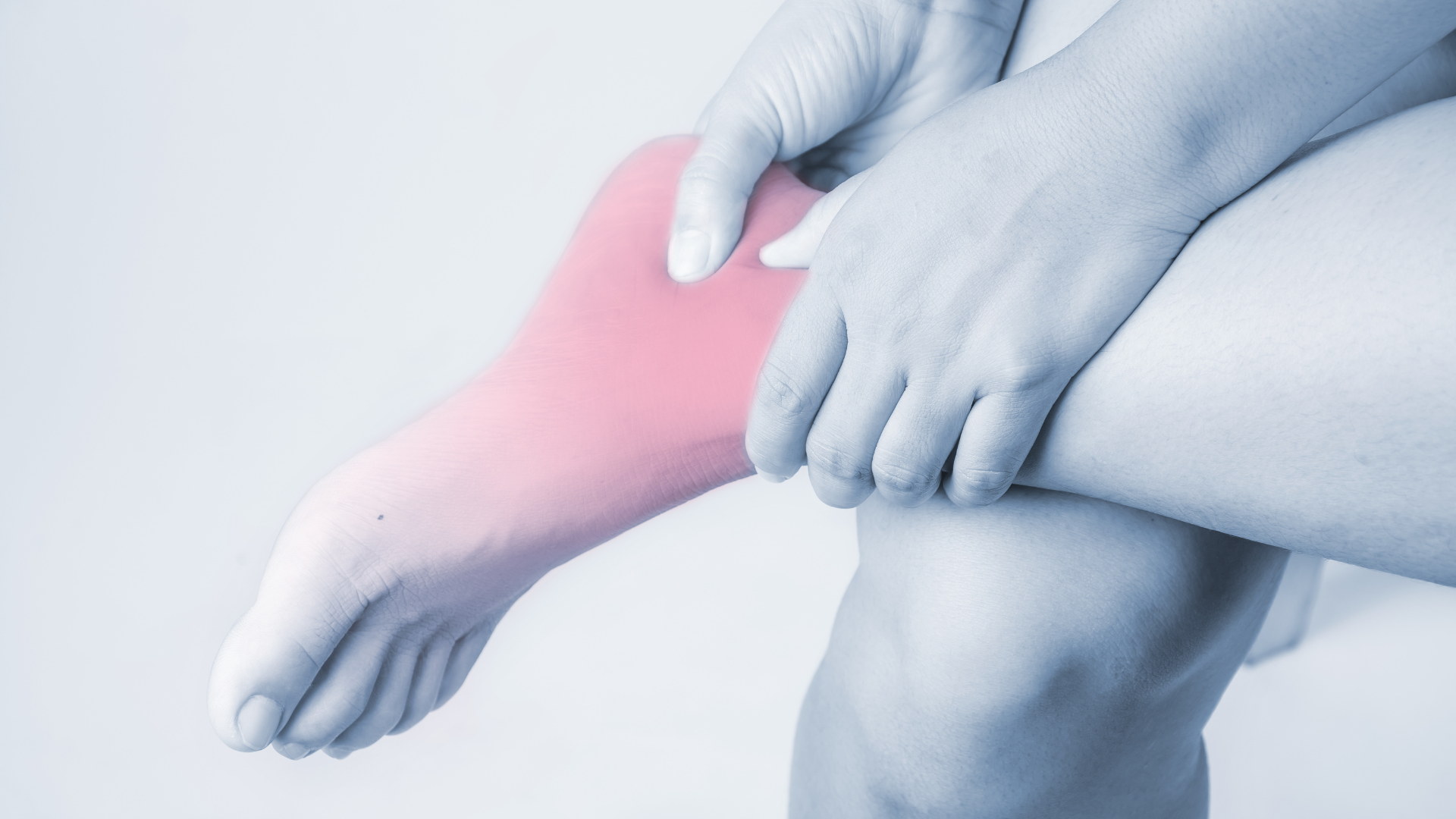If you’ve ever woken up with a sharp heel pain or experienced a nagging ache at the back of your ankle after a run, you might be dealing with one of two common conditions: Achilles tendonitis or plantar fasciitis. While both cause pain in the foot and are often triggered by overuse or poor biomechanics, they affect different structures and have distinct symptoms, causes, and treatments. Let’s dive into the differences—and similarities—between these two common foot problems.
What Is Achilles Tendonitis?
Achilles tendonitis refers to inflammation or irritation of the Achilles tendon, the thick band of tissue that connects your calf muscles to your heel bone. It plays a crucial role in walking, running, and jumping by helping you lift your heel off the ground.
Causes
Achilles tendonitis is typically an overuse injury, commonly seen in:
- Runners who suddenly increase intensity or mileage
- Middle-aged individuals who play sports on the weekend
- People with tight calf muscles or poor ankle flexibility
- Those who wear unsupportive footwear
There are two main types:
- Insertional Achilles tendonitis – where the pain occurs at the point where the tendon attaches to the heel.
- Non-insertional Achilles tendonitis – pain occurs higher up the tendon, in the mid-portion.
Symptoms
- Pain and stiffness at the back of the heel or lower calf
- Worsens with activity, especially running or climbing stairs
- Tenderness when pressing the tendon
- Swelling or a thickened tendon
- Morning stiffness that improves with movement
What Is Plantar Fasciitis?
Plantar fasciitis is the inflammation of the plantar fascia, a thick band of tissue running across the bottom of your foot, connecting your heel bone to your toes. It acts like a shock absorber and supports the foot arch.
Causes
It is also an overuse injury, typically due to repetitive stress:
- Long periods of standing or walking
- High-impact sports or sudden changes in activity
- Flat feet or high arches
- Tight calf muscles
- Inadequate footwear
Symptoms
- Sharp, stabbing pain in the bottom of the heel
- Worse in the morning or after long periods of rest
- Eases with initial movement, then may return after prolonged standing
- Tenderness along the sole near the heel
- Sometimes associated with heel spurs (but not always)
Key Differences at a Glance
| Feature | Achilles Tendonitis | Plantar Fasciitis |
|---|---|---|
| Location of Pain | Back of heel or lower calf | Bottom of heel, arch of the foot |
| Pain Pattern | Worsens with activity | Worse in the morning or after rest |
| Common in | Runners, middle-aged athletes | People on feet a lot, runners, overweight |
| Associated Structure | Achilles tendon (posterior) | Plantar fascia (inferior) |
| Morning Symptoms | Stiffness that improves with movement | Sharp heel pain with first steps |
| Aggravating Factors | Uphill running, jumping, tight calves | Walking barefoot, long standing |
Can You Have Both Conditions at Once?
Yes. Since both conditions are often caused by similar factors—like tight calf muscles, overuse, and poor foot mechanics—it’s not uncommon for a person to suffer from both at the same time. This is particularly true in athletes or individuals with flat feet or high arches.
Diagnosis
Both conditions are clinical diagnoses, usually based on history and physical examination. However, doctors may use:
- Ultrasound or MRI to assess tendon or fascia inflammation
- X-rays to rule out bone spurs or fractures
- Gait analysis or physical exams to assess tightness and foot mechanics
Treatment Approaches
Although they affect different parts of the foot, conservative treatment overlaps:
✅ Rest & Activity Modification
- Avoid high-impact sports
- Switch to low-impact alternatives like swimming or cycling
✅ Stretching & Strengthening
- Achilles tendonitis: focus on calf stretches and eccentric loading
- Plantar fasciitis: plantar fascia stretches and toe curls
✅ Footwear & Orthotics
- Supportive shoes with heel cushioning
- Orthotic inserts to support arches and reduce strain
✅ Ice & Anti-inflammatory Measures
- Ice packs, NSAIDs (like ibuprofen) to reduce pain and swelling
✅ Physical Therapy
- Targeted rehab exercises and manual therapy
- Shockwave therapy or dry needling (in resistant cases)
🦶 Night Splints or Heel Cups
- Especially helpful in plantar fasciitis to maintain gentle stretch overnight
When to See a Doctor
If the pain:
- Persists for more than a few weeks despite rest
- Interferes with daily activities
- Worsens over time
You may need more advanced treatments like: - Cortisone injections (plantar fasciitis)
- Platelet-rich plasma (PRP) therapy
- Immobilization in severe tendonitis
- Rarely, surgery (for chronic cases that fail conservative management)
Final Thoughts
Achilles tendonitis and plantar fasciitis may both present with heel pain, but they stem from different structures and have distinct patterns. Understanding where the pain is, when it occurs, and how it behaves with activity can help guide accurate diagnosis and effective treatment. With early intervention, most people recover fully and return to their normal activities without lasting problems.
If you’re unsure what kind of heel pain you’re experiencing, consult a healthcare provider—early treatment can save you months of discomfort.





